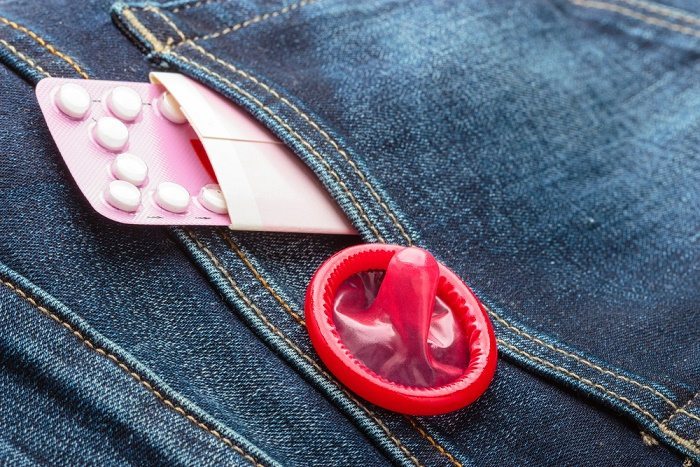New Data: Most Teens Use Contraception the First Time They Have Sex
The Centers for Disease Control and Prevention released new data Wednesday that shows fewer teens, especially younger teens, are having sex, and the majority of those who become sexually active use contraception the first time they have sex.

The Centers for Disease Control and Prevention released new data Wednesday that shows fewer teens, especially younger teens, are having sex, and the majority of those who become sexually active use contraception the first time they have sex.
The data also shows that in the past few years, since it has become easier to access, more teens say they have used emergency contraception.
There has been a relatively steady decline in the percentage of teens who have ever had sex over the past 25 years. In 1988, 51 percent of females and 60 percent of males ages 15-to-19 reported having had sex compared to 44 percent of females and 46 percent of males in 2011–2013. Much of this decline reflects the behavior of younger teens who are delaying sex.
Most teenagers are having sex by age 19.
In 2011–2013, 18 percent of males and 13 percent of females had had sexual intercourse by age 15, 44 percent of males and 43 percent of females had done so by age 17, and, by age 19, 69 percent of males and 68 percent of females had had sex at least once.
The vast majority of these teens (79 percent of females and 84 percent of males) use contraception the first time they have sex. Teens who wait until they are older to have sex are even more likely to use contraception their first time. For example, 93 of female teens who had sex for the first time at 18 or 19 used contraception, compared to 77 percent of female teens who were 17 or younger at first sex.
Almost all male teenagers (99 percent) who had first had sexual intercourse at ages 18 or 19 used a method of contraception, compared with 82 percent of those who were 17 and under at first sex.
Using contraception at first sex is an important indicator of future use. The data shows that young women who did not use a method of contraception at first sexual intercourse were twice as likely to become teen mothers as those who used a method.
Not surprisingly, the most common form of contraception used at first intercourse was the condom. Condoms are inexpensive and easily accessible. And, they are the only method of contraception that also protects against sexually transmitted diseases. Condom use is a nearly universal experience—97 percent of sexually active teen girls said they had used a condom.
The next most popular method was withdrawal, which had been used by 60 percent of sexually active teen girls, followed by the pill at 54 percent. Fifteen percent of sexually active girls had used Depo-Provera (sometimes called the contraceptive shot), 5 percent had used the ring, 3 percent had used intrauterine devices (IUDs), 2 percent had used the patch, and 2 percent had used the contraceptive implant.
One of the more interesting findings was the increased use of emergency contraception. In 2002, 8 percent of female teenagers who had ever had sexual intercourse said they had used emergency contraception, compared to 22 percent in 2011–2013. This 14 percent increase over a decade likely reflects increased access to this important method of preventing pregnancy.
Emergency contraception (EC) is a high dose of hormones, similar to those in birth control pills, that inhibit ovulation. EC can prevent pregnancy if taken within three to five days of unprotected intercourse. The sooner it is taken, the better it works, which is why advocates wanted this drug to be available without a prescription.
Efforts to win FDA approval for over-the-counter status took the better part of a decade. While advocates argued for easy access, opponents suggested that making it more readily available would increase promiscuity, especially in teens and young women.
In 2009, one of the available versions of EC—marketed as Plan B One-Step—was approved for over-the-counter sale, but only to women 17 and older. Younger women still needed a prescription. In April 2013, the age restriction was dropped to women 15 and older. In June of that year, the FDA—complying with a district court ruling—declared that Plan B One-Step would be available without a prescription for “all women of reproductive potential,” regardless of age.
The new data can’t show definitively that OTC access is the reason that EC use is up among teens, but many experts believe it’s a factor. Of course, experts note that rising use of EC is a bit of a double-edged sword. While it has likely helped prevent unintended pregnancy, it is also a sign that some young people continue to have unprotected sex.
